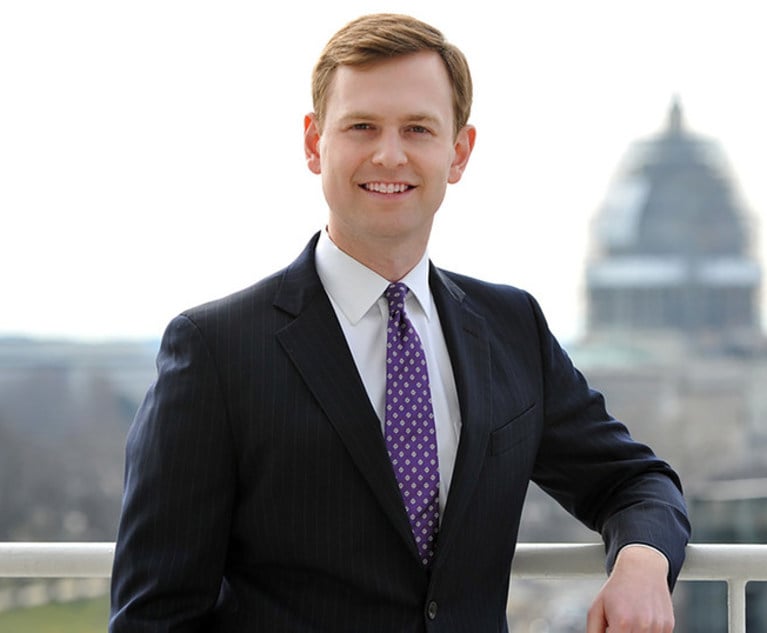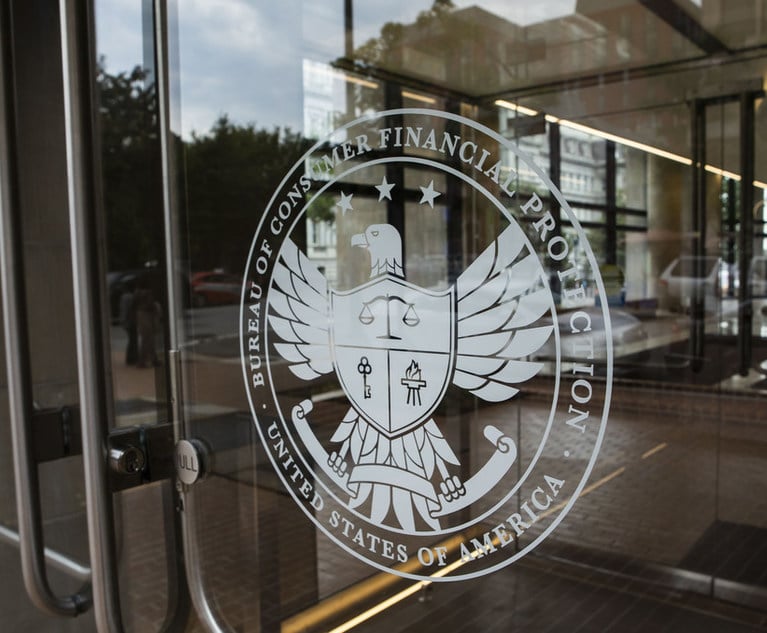Auto Safety Group Wants Records Unsealed in Case Over Goodyear Tires
The Center for Auto Safety is looking to shed light on whether there's a defect, and whether Goodyear was aware of it.
December 06, 2017 at 07:01 PM
5 minute read
 Shutterstock
Shutterstock An automotive public safety group has moved to unseal records in a fraud lawsuit that could reveal how Goodyear and its lawyers allegedly sought to cover up a major safety defect through confidential legal settlements.
The Center for Auto Safety in Washington, D.C., which made a similar move to unseal records involving Chrysler vehicles, was granted a motion to intervene in a lawsuit against Goodyear and its lawyers. The lawsuit, which was filed in 2013 but has since settled, alleged Goodyear and its lawyers failed to disclose test data that would have revealed how its G159 tires, used primarily in motorhomes, suffered tread separation at high temperatures. The suit goes on to say that Goodyear and its lawyers secretly settled cases brought over the defect.
“These tires are still on the road today,” said Jennifer Bennett, a staff attorney at Public Justice who represents the Center for Auto Safety. The documents, she said, “would shed light on whether there's this defect. Second, they will shed light on how Goodyear handled the defect. Was Goodyear aware of it? The allegation is that Goodyear was aware of the defect and conspired with its lawyers.”
Among the documents the Center for Auto Safety hoped to obtain are test data, internal communications, including with Goodyear's lawyers, and claims from customers about property damage, injuries and deaths, Bennett said.
The case, in Maricopa County Superior Court, is the second filed against Goodyear on behalf of four members of the Haeger family, who were severely injured when their 38-foot motorhome veered off a New Mexico highway after the right front tire's tread separated. In the first case, which settled in 2010, U.S. Chief Judge Roslyn Silver in Arizona imposed $2.7 million in sanctions against Goodyear and its lawyers for failing to disclose test data to Heager's attorney—conduct that rose “to a truly egregious level.”
That order went all the way up to the U.S. Supreme Court, which in April reversed to recalculate the sanctions, which it found must be causally linked to the underlying misconduct.
In the second case, brought in 2013, the Haegers sought punitive damages against The Goodyear Tire & Rubber Co. and its former associate general counsel, Deborah Okey. The suit also named Goodyear's outside law firms: Fennemore Craig, and one of its lawyers, Graeme Hancock, and Ohio's Roetzel & Andress, and a former shareholder, Basil Musnuff.
Goodyear spokesman James Peate declined to comment. Goodyear is represented in the litigation by Squire Patton Boggs, Lewis Roca Rothgerberg Christie, Porter Wright Morris & Arthur and DLA Piper. In court papers, Goodyear's lawyers called the breadth of the Center for Auto Safety's unsealing request “startling” because it includes thousands of pages of trade secrets. They also took aim at the group's motives.
“Given CAS's relationship with the plaintiffs' bar (and the fees generated from that relationship), its interests in this matter can hardly be deemed neutral or objective, and they thus are entitled to little or no weight,” they wrote.
David Kurtz of The Kurtz Law Firm in Scottsdale, Arizona, called the defect “more than 20 times worse than Firestone tires.”
He said 41 lawsuits have been brought over the defect. He filed the original product liability suit on behalf of the Heagers in 2003. It settled for a confidential sum.
But in 2012, Silver found Goodyear and its lawyers had refused to produce information relevant to the case. “The little voice in every attorney's conscience that murmurs turn over all material information was ignored,” she wrote.
The second suit sought damages relating to that conduct.
“By fraud and deception, Goodyear was able to secretly settle cases for a small fraction of the just compensation victims were entitled to and would have received if the truth were disclosed,” the suit says.
After discovery commenced in 2016, new evidence about the deaths and injuries tied to the defect “came pouring out that showed this to be the worst tire ever made,” Kurtz said.
He said Goodyear has used protective orders to shield lawyers from obtaining documents in other cases.
“The protective orders have always prohibited disclosure to the federal government: To NHTSA, the Department of Justice, to anybody,” he said.
Maricopa County Superior Court Judge John Hannah allowed Kurtz to disclose some of the documents to the U.S. National Traffic Highway Safety Administration, which he did in July. Kurtz said he also requested referrals to the Department of Justice for possible criminal prosecution.
But he supported the Center for Auto Safety's efforts to make the documents public.
“Only the Center for Auto Safety can follow up with NHTSA and congressional entities regarding the public safety side,” he said.
And while NHTSA's investigations are long, having the information be public would get drivers to act more quickly, Bennett said. NHTSA, now under the Trump Administration, also is bouncing back from widespread criticism over its failure to identify public safety defects such as those in General Motors ignition switches.
Still, Bennett said she was hopeful that NHTSA would act.
“I'm really hopeful that NHTSA will take this information and investigate and if Goodyear did not comply with its reporting responsibilities, but it's hard to know what's going to happen,” Bennett said.
This content has been archived. It is available through our partners, LexisNexis® and Bloomberg Law.
To view this content, please continue to their sites.
Not a Lexis Subscriber?
Subscribe Now
Not a Bloomberg Law Subscriber?
Subscribe Now
NOT FOR REPRINT
© 2025 ALM Global, LLC, All Rights Reserved. Request academic re-use from www.copyright.com. All other uses, submit a request to [email protected]. For more information visit Asset & Logo Licensing.
You Might Like
View All
FTC Finalizes Child Online Privacy Rule Updates, But Ferguson Eyes Further Changes

CFPB Resolves Flurry of Enforcement Actions in Biden's Final Week


'The Tobacco Industry of This Decade': Slew of Class Actions Accuse DraftKings of Creating Addicts
5 minute readTrending Stories
- 1Who Are the Judges Assigned to Challenges to Trump’s Birthright Citizenship Order?
- 2Litigators of the Week: A Directed Verdict Win for Cisco in a West Texas Patent Case
- 3Litigator of the Week Runners-Up and Shout-Outs
- 4Womble Bond Becomes First Firm in UK to Roll Out AI Tool Firmwide
- 5Will a Market Dominated by Small- to Mid-Cap Deals Give Rise to a Dark Horse US Firm in China?
Who Got The Work
J. Brugh Lower of Gibbons has entered an appearance for industrial equipment supplier Devco Corporation in a pending trademark infringement lawsuit. The suit, accusing the defendant of selling knock-off Graco products, was filed Dec. 18 in New Jersey District Court by Rivkin Radler on behalf of Graco Inc. and Graco Minnesota. The case, assigned to U.S. District Judge Zahid N. Quraishi, is 3:24-cv-11294, Graco Inc. et al v. Devco Corporation.
Who Got The Work
Rebecca Maller-Stein and Kent A. Yalowitz of Arnold & Porter Kaye Scholer have entered their appearances for Hanaco Venture Capital and its executives, Lior Prosor and David Frankel, in a pending securities lawsuit. The action, filed on Dec. 24 in New York Southern District Court by Zell, Aron & Co. on behalf of Goldeneye Advisors, accuses the defendants of negligently and fraudulently managing the plaintiff's $1 million investment. The case, assigned to U.S. District Judge Vernon S. Broderick, is 1:24-cv-09918, Goldeneye Advisors, LLC v. Hanaco Venture Capital, Ltd. et al.
Who Got The Work
Attorneys from A&O Shearman has stepped in as defense counsel for Toronto-Dominion Bank and other defendants in a pending securities class action. The suit, filed Dec. 11 in New York Southern District Court by Bleichmar Fonti & Auld, accuses the defendants of concealing the bank's 'pervasive' deficiencies in regards to its compliance with the Bank Secrecy Act and the quality of its anti-money laundering controls. The case, assigned to U.S. District Judge Arun Subramanian, is 1:24-cv-09445, Gonzalez v. The Toronto-Dominion Bank et al.
Who Got The Work
Crown Castle International, a Pennsylvania company providing shared communications infrastructure, has turned to Luke D. Wolf of Gordon Rees Scully Mansukhani to fend off a pending breach-of-contract lawsuit. The court action, filed Nov. 25 in Michigan Eastern District Court by Hooper Hathaway PC on behalf of The Town Residences LLC, accuses Crown Castle of failing to transfer approximately $30,000 in utility payments from T-Mobile in breach of a roof-top lease and assignment agreement. The case, assigned to U.S. District Judge Susan K. Declercq, is 2:24-cv-13131, The Town Residences LLC v. T-Mobile US, Inc. et al.
Who Got The Work
Wilfred P. Coronato and Daniel M. Schwartz of McCarter & English have stepped in as defense counsel to Electrolux Home Products Inc. in a pending product liability lawsuit. The court action, filed Nov. 26 in New York Eastern District Court by Poulos Lopiccolo PC and Nagel Rice LLP on behalf of David Stern, alleges that the defendant's refrigerators’ drawers and shelving repeatedly break and fall apart within months after purchase. The case, assigned to U.S. District Judge Joan M. Azrack, is 2:24-cv-08204, Stern v. Electrolux Home Products, Inc.
Featured Firms
Law Offices of Gary Martin Hays & Associates, P.C.
(470) 294-1674
Law Offices of Mark E. Salomone
(857) 444-6468
Smith & Hassler
(713) 739-1250










